Your Chin as the Basis of Appearance. Face Analysis before the Operation
Written by: Vakhid Mamedov, maxillofacial surgeon
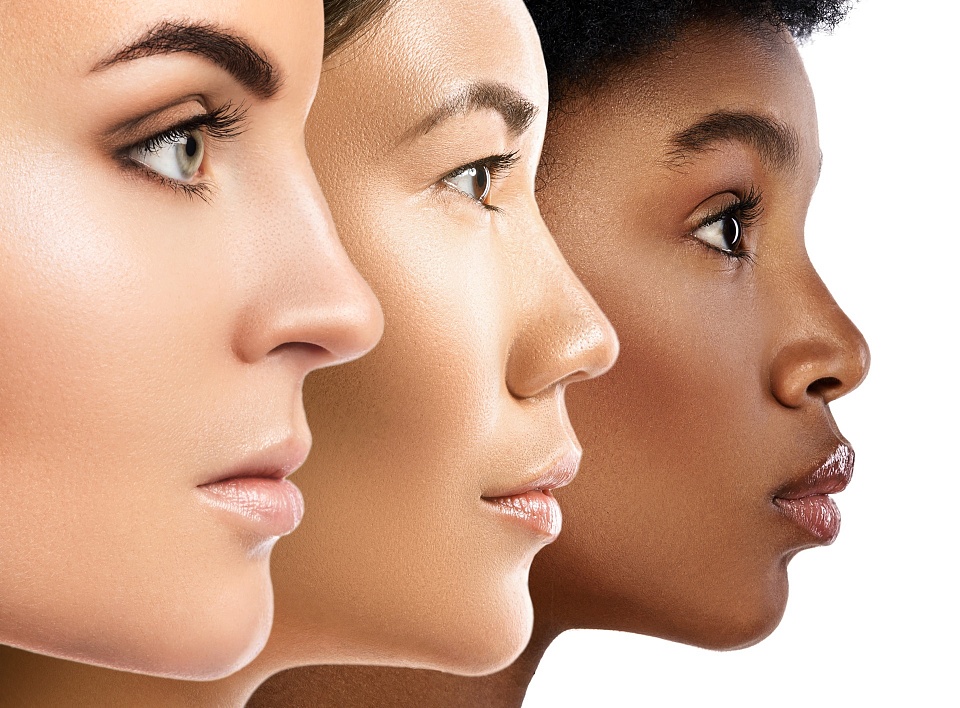
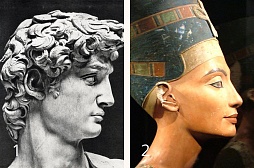
People insist on having appearance pleasant for them and for the others. Egyptian and Greek statues prove that mankind has been concerned about its appearance since ancient times. Different variants of face proportions within the norm make the human face peculiar and somehow unique. Harmony and symmetry of each component underlines the general facial beauty.
Often deviations (inherited or acquired) may lead to breaking both aesthetic and functional face quality.
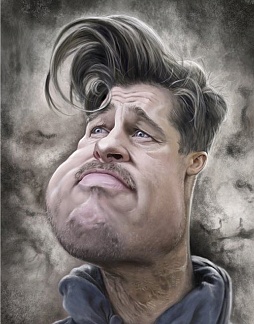
Probably, you must have noticed how often contemporary artists apply different deviations in chin size and shape in their caricatures of famous people. In such pictures a massive square chin makes the character look handsome, brutal and strong while a small, oval chin —hesitant, meek or even femininity.
Almost 20% of the global population has some dentition problems. This also includes chin deficiency of the genial area of the lower jaw. Mentoplasty is the most wide-spread aesthetic operation on the lower jaw. This procedure allows harmonizing the face profile, balancing the lower face, changing the shape and correcting chin asymmetry.
If we are speaking about uniqueness, the chin should not be considered as a separate structure as the face is balanced definitely and this balance can be ruined if other parts are ignored. Before doing the operation for chin expansion the patient's face is thoroughly analyzed en face and in profile. Also, additional examination methods (X-ray study, facial skeleton helical computed tomography and 3D symmetroscopy) allow analyzing the symmetry and shape of bone structures so as their position relative to each other. But first things first.
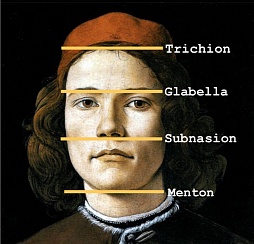
Sandro Botticelli, 1483
When one's face is analyzed en face, it is divided into three relatively equal areas (the rule of thirds).
- The upper third: measured from the hairline – Trichion to Glabella (the most prominent area between the brows where the forehead joins the nasal bridge).
- The middle third is measured from Glabella to Subnasion (the point under the nose where the columella joins the upper lip).
- The lower third is measured from Subnasion to Menton (the lowest point in the lower chin in midline).
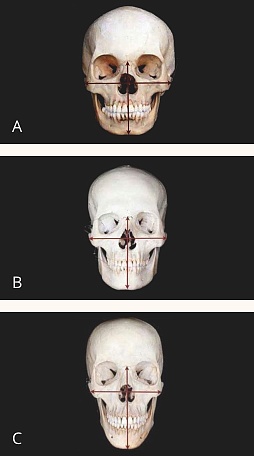
The lower jaw has a smooth and sharp line from the corner to the chin thus separating the lower face from the neck. Chin size, shape and contour should be in balance with sex and certain facial type. As a rule, men have a broader chin with a squarer shape. Correspondingly, women have narrower and oval chin. Most dolichocephals (those have narrow and elongated skull shape) have sharpened and too narrow chins. Brachycephals (those have a broad and short skull shape) usually have massive broad chins, but a shortened lower face. Also the symmetry of the chin relatively to the face and teeth center line when one is smiling. As a rule, visual asymmetry in this area is inherited or can be a result of a trauma.
In profile chin analysis is made in natural head position. The main factors which determine the contour or form of the chin are: front or back position of the lower lip relatively to the higher one, height and depth of the melomental fold (its optimal position at the edge of the upper and middle third of the lower face) and position of the most prominent chin bone part. These three factors and the neck-and-chin area have to be analyzed very thoroughly for correcting the existing deviations.
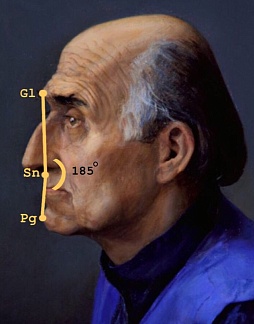
Currently there is a great variety of standardized cephalometric and soft-tissue measurements for analyzing the profile and determining the best chin projection. Orthodontists play a great role in these measurements by solving the functional problems of the dentition. Also they take the aesthetic aspect of treatment into account. In fact, everyone can determine the profile type (straight, convex, concave) visually; if speaking about a more accurate representation, the face profile corner should be determined here. It is formed by joining three points:
- Glabella (gl)—the most prominent area between the brows where the forehead joins the nasal bridge.
- Subnasion (sn)—the deepest point where the nasal floor joins the upper lip.
- Pogonion (pg)—the most prominent point in the chin contours.
A normal corner is usually 165°-175°. If it is much below 165°, this indicated a convex profile, if it is over 180° – the profile is concave.
In the 50s orthodontist Robert Ricketts offered his own idea for balancing the lower face. It involves specific relations between the nose, lips and chin. He called the line tangentially drawn through the nose and chin an "aesthetic plane" ("E-plane"). The most optimal variant when this plane is tangent to both lips.
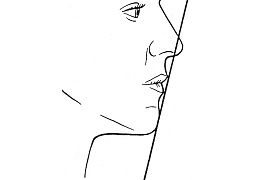
When planning operations for expanding the chin plastic surgeons often use Riedel line which considers direct relation between the chin and lips. This line passes through the most prominent part of the upper (Ls) and lower lip (Li). On a balanced face the Riedel line touches or is close to Pogonion point (Pn). If the Pn point is far behind, this indicates a recessive, i.e. weak chin.

Analysis of all soft-tissue points and planes is made during visual examination of the patient directly or on an en face and in profile photo. The modern concept of changing the chin area also provides dealing with substructures—the mandibular bone. Currently computer tomography is sued in anaplastic and maxillofacial surgery when aesthetic and reparative operations on facial skeleton are planned due to high quality if compared with panorex radiograph.
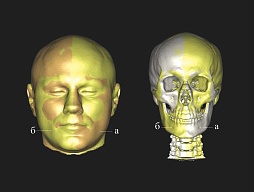
Before planning the operation for inserting the chin inlay helical computed tomography can be used for receiving the 3D model of the lower jaw determining its structure, shape and relative symmetry of the left and right jaw halves. The inlay exterior is modelled on the basis of the received computer model so that it would suit this patient; the precise match of the inlay interior with the bone surface allows positioning it perfectly excluding the possibility to probe the bone-inlay joint.
Also, if patients have a pronounced asymmetry, 3D symmetroscopy is used for mentoplasty.
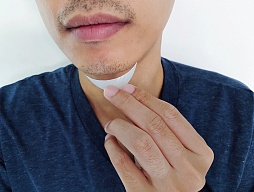
This method is used for determining asymmetry areas between left and right half-faces by studying the 3D model of the skull and soft tissues relatively the middle and traverse line in three planes (axial, coronal and sagittal). After visualizing the difference between left and right half-faces volumetric measurements are made and ways of correcting this deviation are modelled. After this an individual inlay which can correct chin asymmetry after insertion by the surgeon.
Preparation of individual chin inlays or their customization is a reliable tool when planning mentoplasty which allows reaching a stable aesthetical result.
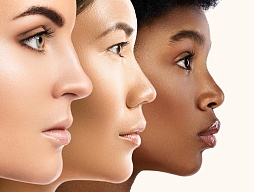
For evaluating the symmetry of facial soft tissues and proportions of the upper, middle and lower third our The Platinental clinic uses the 3D visualization (3D face mapping). It helps to reveal even the slightest appearance peculiarities related to deficiency of mandibular corners or genial area of the lower jaw. In real-time mode patient can see how his face will be transformed after aesthetical plastic operation of the chin (mentoplasty), cheekbones or complex harmonization of appearance under the technique of Аndrey Iskornev. As a rule, we always consider ethnic laws of appearance as it has been established that anthropometric laws for a European face are very different for an Afro-American, Mongoloid or mixed standard (mulattos).
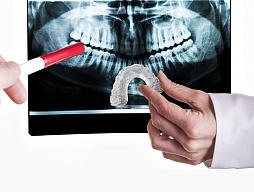
For making a face more feminine the chin should be sharpened a bit (considering the forehead height) and, vice versa, massive flat chin is an attribute of masculinity and some brutality of appearance. Moreover, a new chin should be combined with the projection of facial cheekbones and corners of lower jaw as it is a single system which creates a basis of attractiveness and naturalness.
One has to understand that separate chin expansion solves the aesthetic problem, but not the functional one. Anyway, before the procedure of chin expansion the surgeon pays attention to the bite. If besides a recessive chin also has a pronounced bite deviation (distal, closed) than orthodontist's or maxillofacial surgeon consultation is required for solving functional problems. Sometimes a decision about orthodontic treatment and orthognathic operation can be made. Its purpose is moving jaws for bite normalization and patient's profile.
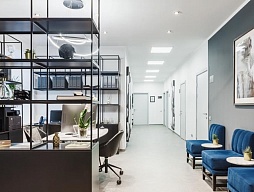
If the bite is normal, as a rule, it is enough to do the so-called aesthetic solution with US porous implants which can be customized by the surgeon during the operation. Sterile endoprosthesis is turned with special burs. This allows following the individual features of the patient's facial bones. For sure, this skill requires a higher aesthetic sense and some artist's and sculptor's skills from a surgeon. That's why The Platinental always hires surgeons with drawing skills. Moreover, we actively participate in educational art seminars for doctors within the common initiative of Chair of anaplastic surgery, cosmetology and cell technologies of the chief visiting plastic surgeon of Russia Manturova N. Y. and Pushkin State Museum of Fine Arts.
Sources:
- Facial Plastic and Reconstructive Surgery (Fourth Edition). Ira D. Papel. 2016
- Cosmetic Facial Surgery (Second Edition). Joe Niamtu, III. 2017
- The Art of Genioplasty: An Insight. Gaurav Mittal, Ritesh Garg, Abhishek Rathi, Sweta Parna. International Journal of Oral Health and Medical Research. 2017
- 3D Symmetroscopy—new diagnostic technique of skull asymmetry in a practice of maxillofacial surgeon. A.S. Gerasimov, O.V. Svalkina. Clinical dentistry magazine. 2017











